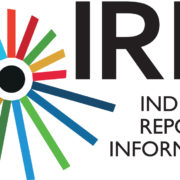Newest Eye on Earth Webinar Announced for February 7th 2018!
JOIN US FOR A WEBINAR ON TUE FEB 07, 2018 AT 12:00 PM UTC DURATION 1 HOUR.
The open source “Open Data Cube” platform
and the Digital Earth Australia Case Study
by Dr Stuart Minchin of Geoscience Australia
REGISTER NOW! HTTPS://ATTENDEE.GOTOWEBINAR.COM/REGISTER/7424241548289224451
- All registrants receive a link to the recording – please register even if you cannot attend the live event.
- Please share this invitation with your professional network
ABSTRACT
The Australian Geoscience Data Cube is an innovative capability to measure and monitor the Australian land surface at unprecedented scale. The unique combination of high performance computing, big-data mining techniques and new satellite observing capabilities allows the liberation of the huge archive of satellite observations over Australia collected over the last 35 years to deliver up-to-date time series of environmental change at high resolution, over the entire continent.
The development of this technology provides a capability to develop objective, evidence based measurement and monitoring of landscape change in a much more cost effective, efficient and accessible way across entire continents and shows the potential for a global infrastructure of such tools for governments interested in the development, mapping and management of land, water and coastal activities.
Each product produced by Digital Earth Australia can potentially also be generated for every country in the world!! Digital Earth Australia has been developed on the open source “Open Data Cube” platform which is being further developed both by Australian researchers and through the Committee on Earth Observing Satellites (CEOS). CEOS has demonstrated that with free and open Landsat and Copernicus data, Open Data Cube can be developed rapidly for any country in the world, and even hosted in a cloud environment for quick deployment without the need for a huge infrastructure investment.
SPEAKER
Dr Stuart Minchin is the Chief of the Environmental Geoscience Division of Geoscience Australia (GA). The Environmental Geoscience Division encompasses GA’s National Marine and Earth Observation Group (operational satellite remote sensing, national satellite archives, offshore bathymetry and biodiversity monitoring, coastal geomorphology, Antarctic geoscience and tropical cyclone, fire and sea level rise risk mapping), the National Geospatial Information Group (effectively Australia’s National Mapping Agency, including Defence mapping, maritime boundaries, elevation and topographic mapping, hydrological mapping and built environment), and the Groundwater group (focused on groundwater resources, sea water intrusion, coal seam gas impacts and other groundwater resource issues.)
After registering, you will receive a confirmation email containing information about joining the webinar.



